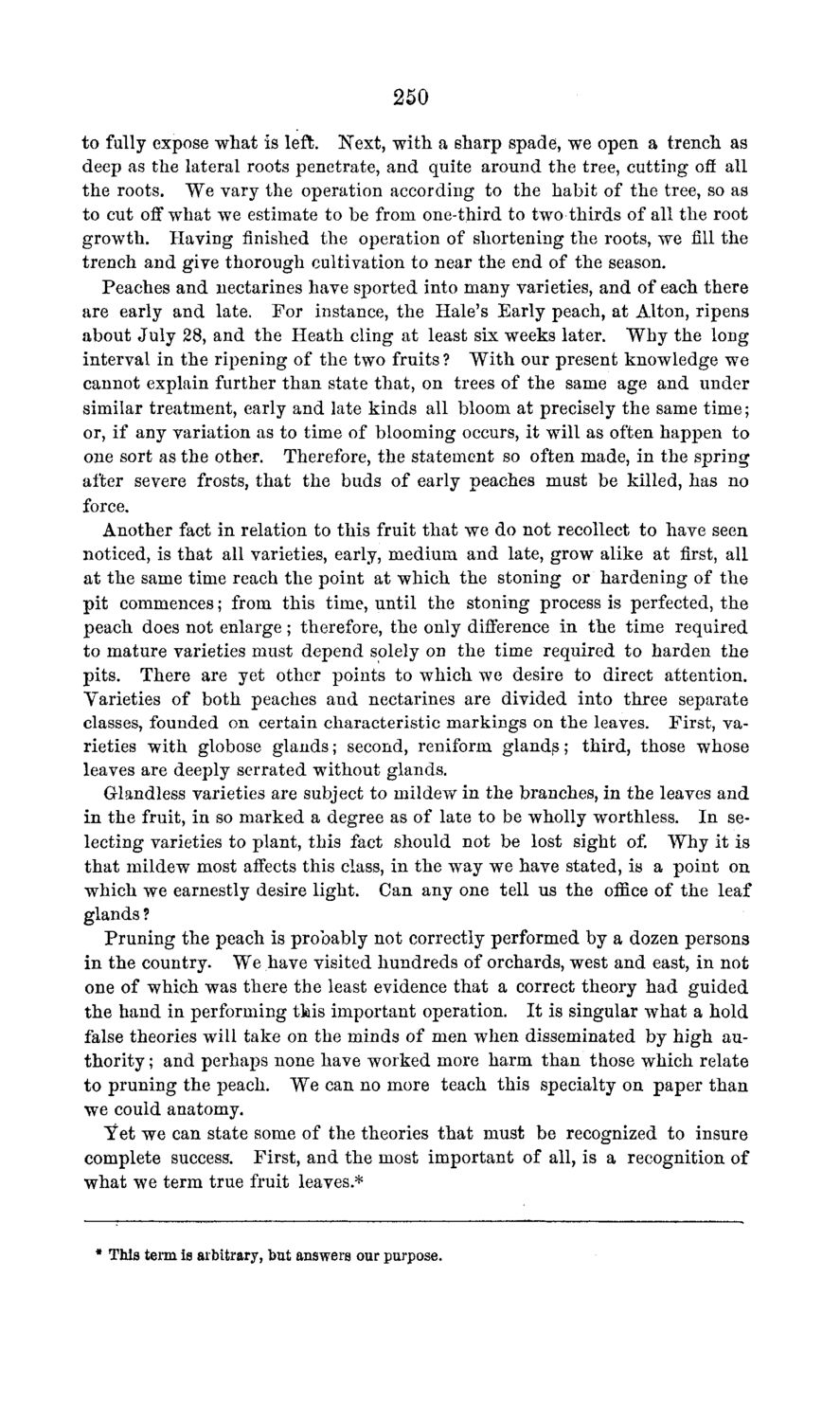| |
| |
Caption: Board of Trustees Minutes - 1869
This is a reduced-resolution page image for fast online browsing.

EXTRACTED TEXT FROM PAGE:
250 to fully expose what is left. Next, with a sharp spade, we open a trench as deep as the lateral roots penetrate, and quite around the tree, cutting off all the roots. We vary the operation according to the habit of the tree, so as to cut off what we estimate to be from one-third to two thirds of all the root growth. Having finished the operation of shortening the roots, we fill the trench and give thorough cultivation to near the end of the season. Peaches and nectarines have sported into many varieties, and of each there are early and late. For instance, the Hale's Early peach, at Alton, ripens about J u l y 28, and the Heath cling at least six weeks later. W h y the long interval in the ripening of the two fruits ? W i t h our present knowledge we cannot explain further t h a n state that, on trees of the same age and under similar treatment, early and late kinds all bloom at precisely the same time; or, if any variation as to time of blooming occurs, it will as often happen to one sort as the other. Therefore, the statement so often made, in the spring after severe frosts, that the buds of early peaches must be killed, has no force. Another fact in relation to this fruit t h a t we do not recollect to have seen noticed, is that all varieties, early, medium and late, grow alike at first, all at the same time reach the point at which the stoning or hardening of t h e pit commences; from this time, until the stoning process is perfected, t h e peach does not enlarge; therefore, the only difference in the time required to mature varieties must depend solely on the time required to harden the pits. There are yet other points to which we desire to direct attention. Yarieties of both peaches and nectarines are divided into three separate classes, founded on certain characteristic markings on the leaves. First, varieties with globose glands; second, reniform g l a n d s ; third, those whose leaves are deeply serrated without glands. Glandless varieties are subject to mildevf in the branches, in the leaves and in the fruit, in so marked a degree as of late to be wholly worthless. I n selecting varieties to plant, this fact should not be lost sight of. Why it is t h a t mildew most affects this class, in the way we have stated, is a point on which we earnestly desire light. Can any one tell us the office of the leaf glands ? P r u n i n g the peach is probably not correctly performed by a dozen persons in the country. We have visited hundreds of orchards, west and east, in not one of which was there the least evidence that a correct theory h a d guided the hand in performing this important operation. It is singular what a hold false theories will take on the minds of men when disseminated by high authority ; and perhaps none have worked more harm than those which relate to pruning the peach. We can no more teach this specialty on paper t h a n we could anatomy. Yet we can state some of the theories t h a t must be recognized to insure complete success. First, and the most important of all, is a recognition of what we term true fruit leaves.* * This term is arbitrary, but answers our purpose.
| |